Data Science With R Course Series - Week 9
Written by David Curry
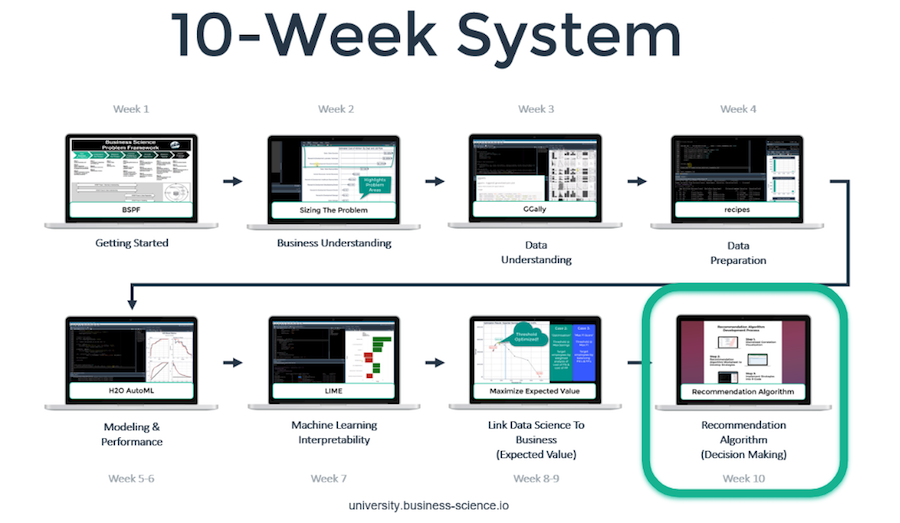
There are only two more weeks in the course! This week will extend what you learned from the Expected Value by performing an optimization and sensitivity analysis.
The optimization and sensitivity analysis will teach you how to identify the maximum business savings for the overtime problem and see how additional factors change the amount of savings:
-
Threshold Optimization - A method used to maximize expected saving via iteratively calculating savings at various thresholds
-
Sensitivity Analysis - A method used to investigate how sensitive the expected savings is to various parameter values that were created based on assumptions
Get ready, this week is packed full of learning!
Here is a recap of our trajectory and the course overview:
Recap: Data Science With R Course Series
You’re in the Week 9: Expected Value Optimization And Sensitivity Analysis. Here’s our game-plan over the 10 articles in this series. We’ll cover how to apply data science for business with R following our systematic process.

Week 9: Expected Value Optimization And Sensitivity Analysis

Student Feedback
Week 9: Expected Value Optimization And Sensitivity Analysis
Threshold Optimization: Maximizing Expected ROI
Last week you learned how to increase business savings by targeting employee overtime. In this module, you will use the R package purrr to determine the maximum savings for the overtime policy.
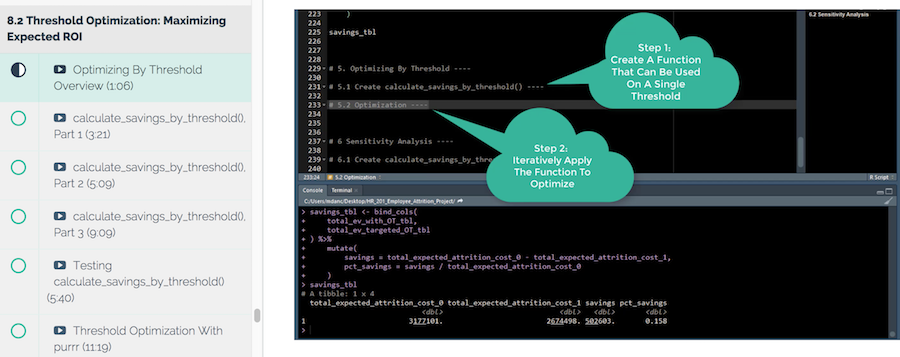
Threshold Optimization: Visualizing The Expected Savings At Various Threshold
Create a plot using the threshold optimization to visualize the optimization results (business savings). This is a useful way to compare the optimization analysis to the employee churn business case and see how the threshold optimization produces business savings.
Sensitivity Analysis: Adjusting Parameters To Test Assumptions
From the previous module, you determined that employees with a certain percentage of overtime (threshold) should be targeted to help reduce employee churn. However, this is based on a static employee salary.
Now you will learn how business savings can change based on different employee salaries (sensitivity).
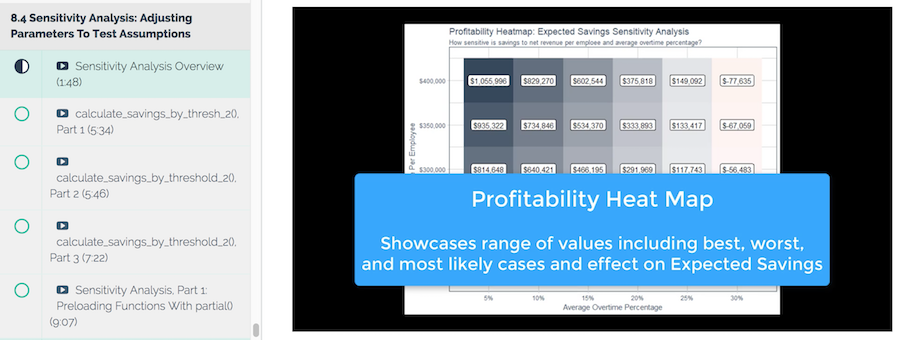
Sensitivity Analysis: Visualizing The Effect Of Scenarios & Breakeven
In this module, you will analyze the threshold analysis with the addition of another variable, employee salary. Create a profitability heatmap to visualize how business savings changes based on employee revenue amounts.
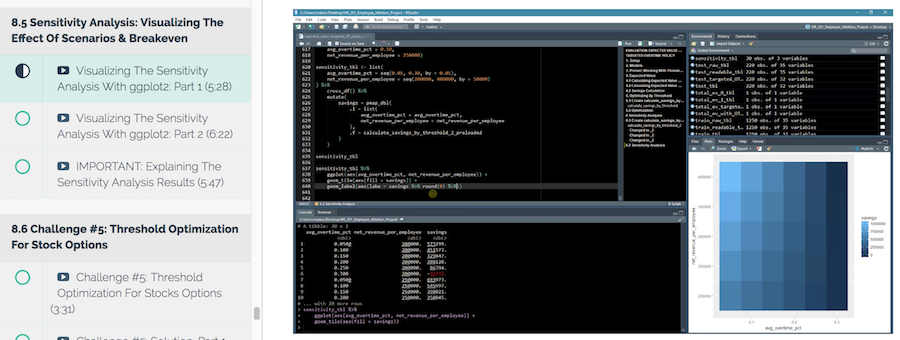
Challenge #5: Threshold Optimization For Stock Options
Your overtime analysis is complete, but now you see that people with no stock options are leaving at a faster rate than people with stock options.
In this two-part challenge, you implement the same threshold optimization and sensitivity analysis, but this time for employee stock option.
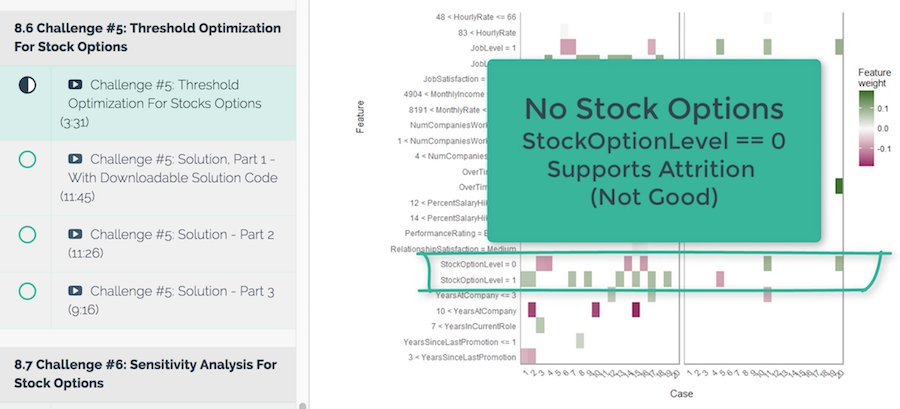
Challenge #6: Sensitivity Analysis For Stock Options
Continuing the challenge, perform a sensitivity analysis for the stock option threshold, and adjust by stock option price.
Once you complete your solution, compare it with the instructor’s solution in the challenge solution videos.
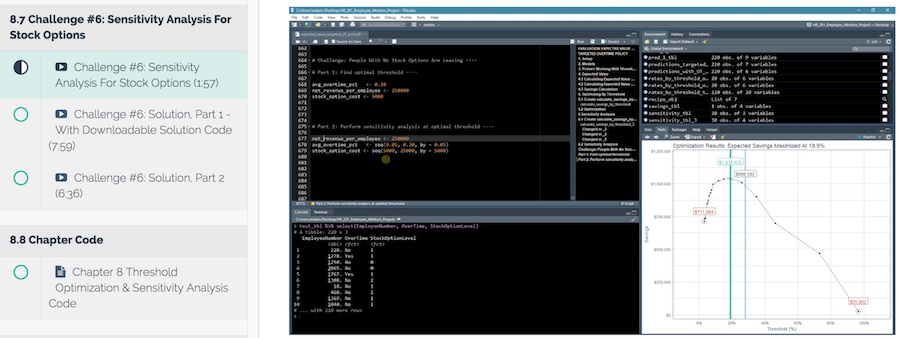
You Need To Learn R For Business

To be efficient as a data scientist, you need to learn R. Take the course that has cut data science projects in half (see this testimonial from a leading data science consultant) and has progressed data scientists more than anything they have tried before. Over 10-weeks you learn what it has taken data scientists 10-years to learn:
- Our systematic data science for business framework
- R and H2O for Machine Learning
- How to produce Return-On-Investment from data science
- And much more.
Start Learning Today!
Next Up
The next article in the Data Science With R Series covers Build A Recommendation Algorithm To Improve Decision Making.
In the final week, you will implement a 3-Step Process for creating a recommendation algorithm. The learning modules are designed to integrate critical thinking and strategy development with data-driven decision making.
As an added bonus, you’ll see a sneak preview of the Shiny Web App built in DS4B 301-R. The Recommendation Algorithm developed here plays a major role in that course.
sensitive the expected savings is to various parameter values that were created based on assumptions
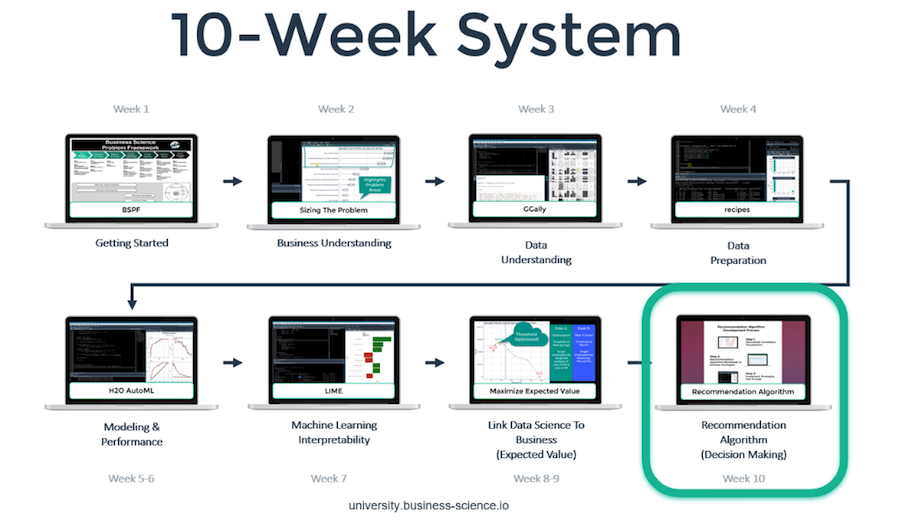
Week 10: Build A Recommendation Algorithm To Improve Decision Making
Our Revolutionary System For Learning R For Business
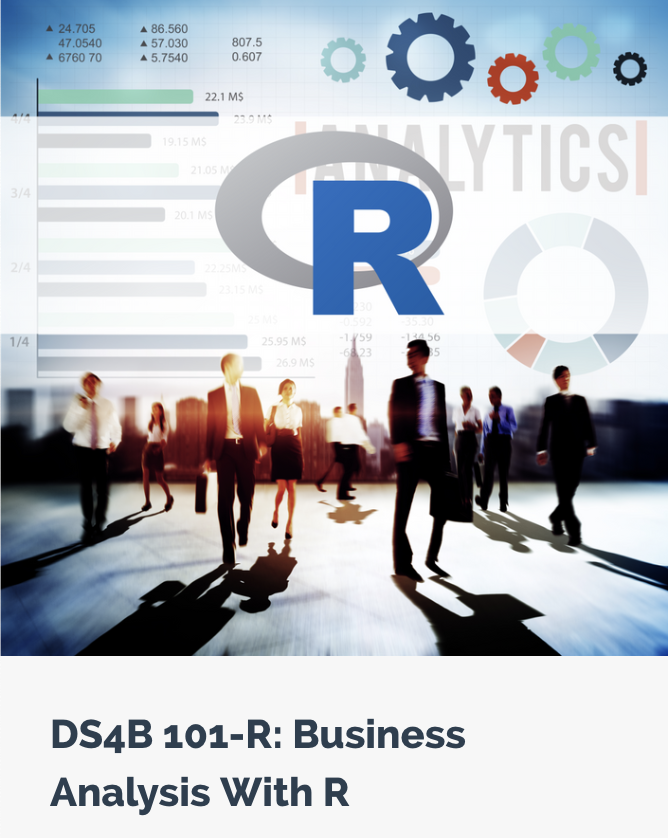
Are you interested in learning R For Business? Then look no further.
-
Business Science University has the most advanced, technology intensive, and streamlined data science educational system for business on the planet.
-
We are developing a NEW INTRODUCTORY COURSE (DS4B 101-R) that delivers an amazing educational experience for learners that want to apply R to business analysis.
-
The beginner DS4B 101-R is the prequel to the intermediate/advanced DS4B 201-R course
Course Launch Date
Launch is expected at end of November 2018 / Beginning of December 2018. Sign up at Business Science University to get updates.
Course Details

Our NEW BUSINESS ANALYSIS WITH R COURSE (DS4B 101-R) combines:
-
Teaching the Data Science with R Workflow in a 100% business context: data import, data manipulation (business aggregations, time-based calculations, text manipulation, categorical manipulation, and missing data), data visualization, business reporting with RMarkdown, and advanced analysis including scaling analysis and building functions.
-
Two state-of-the-art business projects.
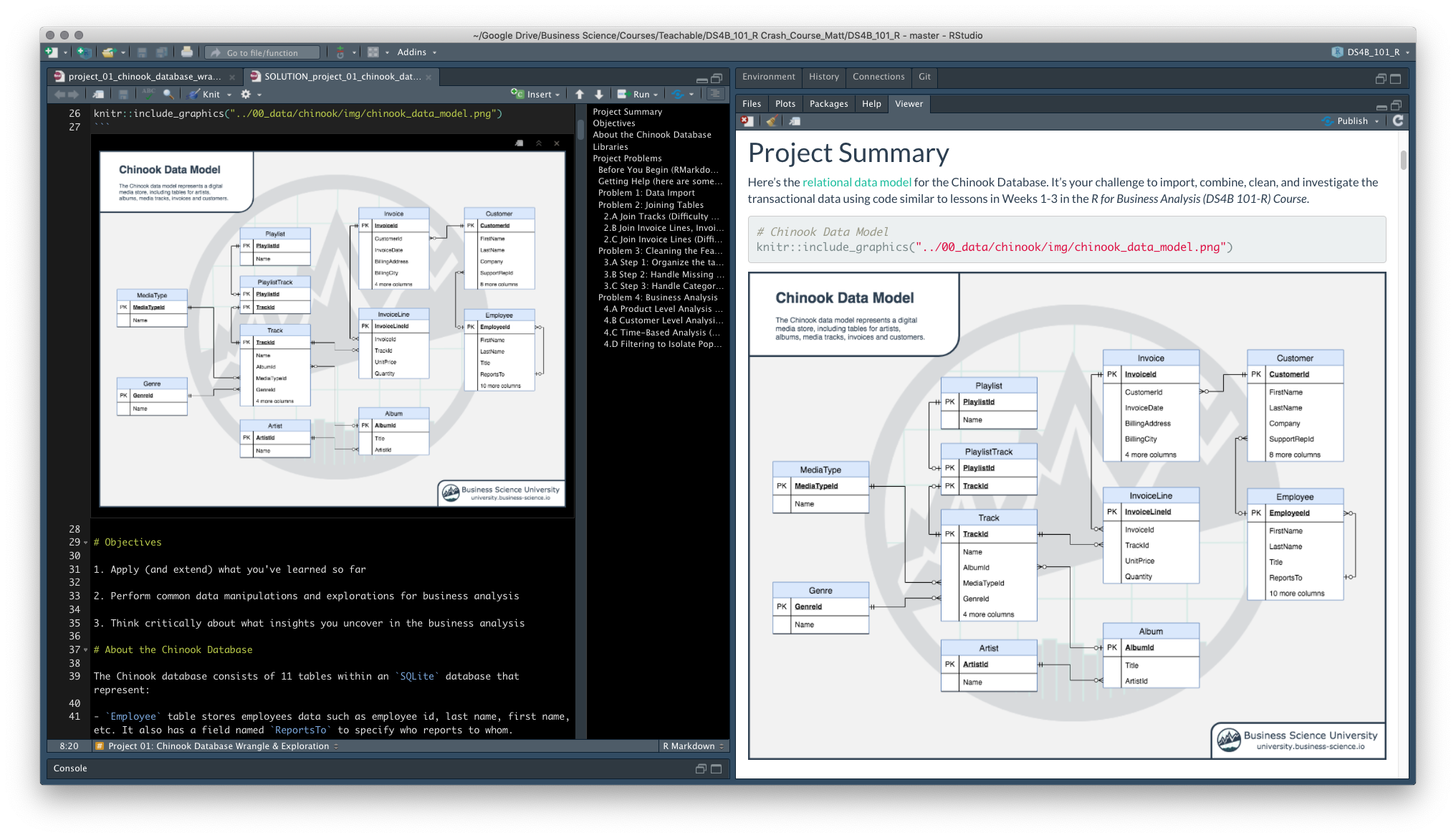
Project 1 - Exploratory Analysis of Digital Media Merchant